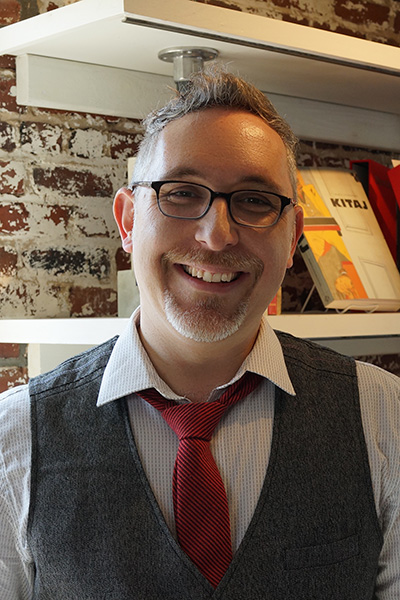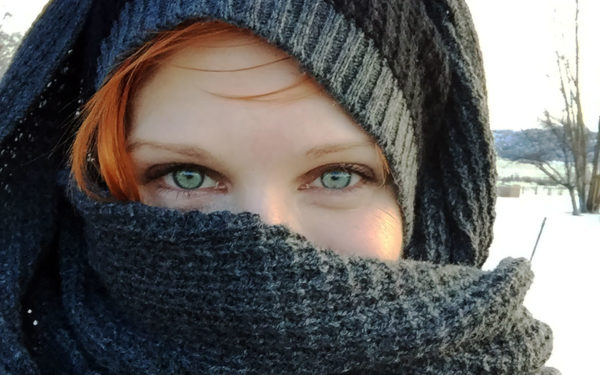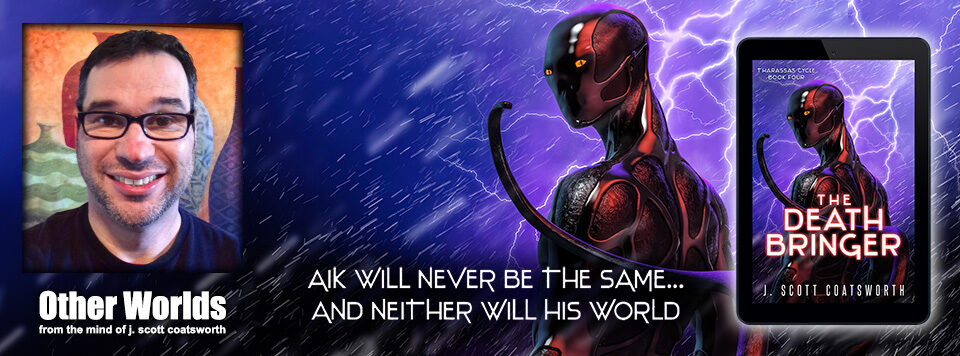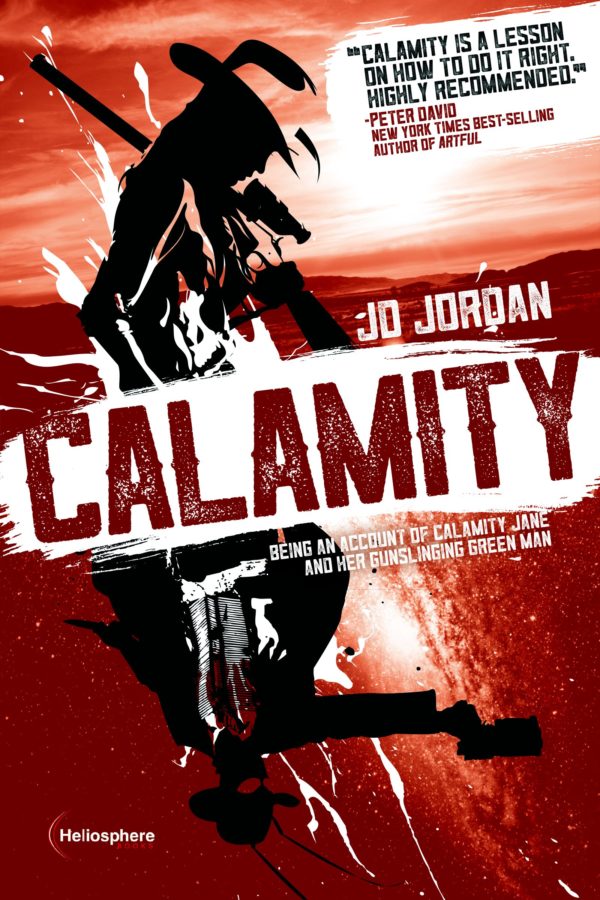Welcome to my weekly Author Spotlight. I’ve asked a bunch of my author friends to answer a set of interview questions, and to share their latest work.
Today, JD Jordan – Awesome dad, killer novelist, design director, and cancer survivor. Also, I’m charming AF.

Thanks so much, JD, for joining me!
JSC: What was your first published work? Tell me a little about it.
JD: My first published anything was a short called “Hope Under My Fingernails.” It won Creative Loafing Atlanta’s 2004 short fiction contest (you can read it for free at o-jd.com/hope-under-my-fingernails) and came with a cash prize, a reading at the Margaret Mitchell House, a press event, and everything. Not a bad way to start off a writing career, I reckon. Of course, the thing I remember most about that night was the one judge who went out of their way to let me know, my story wasn’t their first choice. Mine was too sentimental—and that was cheap. Except I was going for sentiment. And it won. So, I guess it wasn’t so much cheap as it was worth a cash prize, a reading at the Margaret Mitchell House, a press event, and everything.
JSC: Have you ever taken a trip to research a story? Tell me about it.
JD: A few, though I didn’t know most of them were research trips, at the time. I’m often very inspired by places, so many times a story was born from a trip and not the other way around. Most recently, my family and I were taking an RV road trip (we’re that family) through Arizona and New Mexico and we detoured through the Navajo and Hopi reservations. I was really inspired by that leg of our trip and took it as a prompt to really investigate Hopi culture and write a scifi short, “Sh/ft” (you can link it at o-jd.com/short-fiction). I worked with some sensitivity readers on the Hopi res, too, to try and get it right. I even followed up with a second RV road trip (we’re still that family) to explore Hopi cliff ruins and spend time with people in the area. I love that stuff.
Travel really is the best educator. Even after the books are written. When I wrote my debut novel, the scifi-western Calamity (o-jd.com/calamity), I did all my research remotely: the UGA library, Google Earth, Wikipedia, normal stuff. But after the book came out, I convinced a filmmaker friend and my wife to roadtrip with me out to Wyoming the week after Christmas to shoot some of the book’s locations and try and shoot some sort of book trailer or short film.
It was beyond cold. And beyond lovely. And Google Earth had done a killer job helping me get things right. That was hugely validating. But we didn’t really get the material we needed for a short or even a trailer. I got tons of awesome photos‚—enough to illustrate a tie-in novella (you can read it for free at o-jd.com/calamity-courtingcalamity)—but I’m pretty sure my wife will never let me schedule a photoshoot for the wintertime, again.

Joking aside, it was amazing to wander through the ghost town of Piedmont, Wyoming—where Calamity Jane really lived and where her fictional green gunslinger first set fire to the Wilder West. Or to break into Fort Caspar—where Crazy Horse really led the tribes in battle against Federals and where I had Calamity Jane face down the mechanical Gray Man. Or to feel the engravings settlers cut into Independence Rock as they navigated the Oregon Trail—and where I chased a rabbit and the sunset with my camera. I got so many ideas for the inevitable sequels. But I don’t recommend navigating wintertime Wyoming in a rented Kia. That there is truck country.
JSC: Do you ever base your characters on real people? If so, what are the pitfalls you’ve run into doing so?
JD: I have two answers for this:
First, some of my characters are historical. In Calamity, Calamity Jane is the central POV character and narrator, so leaning into her real story was key. She’s well-known enough from shows like Deadwood and cartoons and even Fortnite, that I had to get pretty familiar with her biography. But thankfully, she’s a notoriously unreliable narrator who lied as much about her own life as she did everything else. And I set Calamity in a gap in her biography—after her family’s tragic crossing to Salt Lake City but before she became famous as a scout. So I retained a lot of room to maneuver around the facts in her life, even before I introduced alien cowboys and flying engines.
Second, I base characters on contemporaneous people all the time. Usually some flavor of myself. A lot of authors will tell you, everyone they ever meet is fair game for character inspiration, backstory, or even just naming and anecdotal stories.
In both of these cases, I find starting with real people—historical or contemporary—yields a more-real character. And it puts boxes around characters, too. It assigns them realistic limitations and unexpected choices and the kinds of color most authors wouldn’t come up with on their own.
My educational background is in history: a BA in medieval history and an MA in US-Middle Eastern foreign policy in the 20th Century. All the best stories are in history. I always start there if I can, especially with primary sources if they exist. Kind of like how George R.R. Martin based so much of Westeros and its characters on War-of-the-Roses England. Starting with a historical foundation gave him a rich base for his fiction. But—for characters or settings—it can be a trap. What are you adding to these real characters to make them your own? How are you advancing your story with these anecdotes and colors? That’s the trap. Just because something is real doesn’t mean it’s interesting. It’s how you use it in service to a story.
JSC: How long do you write each day?
JD: Sadly, I don’t write most days. I try to do some of the business of writing, every day. This may include research for a new idea, editing, marketing, or writing for my day job (which I still count as practice, even if it’s non-fiction) in addition to the actual writing of new fiction. But life is busy. I have a demanding full-time job and five kids (jeez!) so I have to be generous with myself. Not every day is a writing day. But I try to keep things moving forward the best I can and I’m at peace with that even if it means I don’t get a book out as often as I’d like.
JSC: Are there underrepresented groups or ideas featured if your book? If so, discuss them.
JD: Definitely—though not always consciously.
When I wrote Calamity, I was thinking of Calamity Jane as the underrepresented group I was exploring. The Wild West wasn’t a safe place for teenage girls, and the story of women in the West typically focused whores and wives—Lovesome Dove’s femme cast. And for the alien Green Man, I was thinking the immigrant experience. The West was full of non-English immigrants, and I wanted the Green Man’s otherness to fit into that niche rather than the native experience.
But I had a number of readers see something else when they read it. I heard a lot about my Calamity Jane as an abuse and assault survivor (spoiler and trigger warning: sexual assault is a component of her historical and in-novel character). And a larger group of readers saw the Green Man as a race metaphor rather than as an immigrant cipher. And I think those are both fantastic and I’m glad I touched on those issues in a way that resonated and was respectful of the subject matter. The latter feedback was also a helpful reminder, to me, that one of the largest immigrant groups in the West were free blacks—by the aftermath of the Civil War, one-in-four cowboys was black (Lonesome Dove missed that casting call). These conversations inspired my follow-up Wilder West short story “The Devil’s Own Pet” (you can read it for free at o-jd.com/free-short-story), which switched its POV to Jim Beckwourth’s—a genuine frontier legend who also happened to be a freed slave, a Crow chief, a gambler, and a cowboy—and pivoted the alien character to a female-presenting Green Man to 180° the sexual power-dynamics.
I say all this while being a cis-white hetero upper-middle-class white collar father. That’s my experience and my privilege and I try to be very aware of it. And I love stories that originate and are told outside my experience. Thankfully, I have a day job leading a user experience design team and my effectiveness as a leader and designer is 100% dependent upon my ability to empathize with people of other experiences than my own—regardless of what those experiences may be. And that’s been by far my best training to be a writer. Setting out to write about Jewish children of divorce (“Hope Under My Fingernails”), orphaned girls with anger-management problems (Calamity), native-American teens trying to get off the res (“Sh/ft”), or freed black cowboys (“The Devil’s Own Pet”) is about finding their voices, not just parroting my own.
Research is the key. I don’t know what it’s like to have superpowers or be an alien, but I can do research and create a persona for those characters. Nor am I female or gay or a child or Muslim—all characters I’m researching and preparing now—but I know how to research and interview. And I know how to empathize and write beyond myself. And I know how to find where an authentic piece of me fits in with these characters, so we can tell a story together. I like how it stretches my craft and my mind. And I work with sensitivity readers to make sure I’m doing it as well as I can.
JSC: Are you a full-time or part-time writer? How does that affect your writing?
JD: Part time, all the time. I’m a designer who writes. But I aspire to be a writer who designs.
In his streaming writing classes from BYU, Brandon Sanderson talks about how writers should have boring jobs so they can save their intellectual and creative energies for writing (You can see his great writing talks for free at youtube.com/watch?v=-6HOdHEeosc). And I 100% don’t follow his advice. I agree with him on certain subjects, mind you, but I don’t always do it.
I actually have a very intellectually taxing and very rewarding day job, so I won’t complain. I’m the Executive Design Director at an innovation agency where I get to work with a team of crazy smart people solving big technology and communications problems and I make decent money doing it. I love it. My job really does an excellent job satisfying my inner squirrel—my ADD spirit animal. And I think there’s the bones of some good present-day sci-fi in my career, to be honest.
But the job does sap the energy I’d use to write more. But so do my kids and my wife and my Xbox. It about finding the balance in all that noise. But I’ve never been content doing just one thing, so I thrive designing and parenting and husbanding and writing. All these activities fuel each other, even if they do all draw from the same pool of energy. So, no, I don’t write as much as I’d like. But I get to do a lot and I’m grateful for it.
JSC: Tell us something we don’t know about your heroes. What makes them tick?
JD: I think the common thread in all my heroes—whether they’re on horseback, in outerspace, or the open desert—is that the arc of their stories are always personal in scope. They’re more like Rogue One than A New Hope. There’s a bigger context, but I care more about what’s happening to one or two people, not the whole world. There are aliens in the Wild West, in Calamity, but that’s not what it’s about: It’s about a girl who has everything taken from her and how she redefines herself in that palingenesis. In “Sh/ft”, there are teleporting native Americans saving the world from terrorism, but that’s not what it’s about: It’s about a girl who’s never felt seen before and, her anxiety over potentially losing her sudden specialness.
I love the big epic scifi scopes. I love space opera and Death Stars and Muad’dibs and galaxy-spanning epics. And I love doing the world-building to make those epics possible. But I’m typically drawn to the smaller stories that exist within those epics. This is why Jyn Erso’s struggle over the Death Star is more powerful than Luke’s—and why Luke’s journey with Yoda is more powerful than his eventual confrontation with the Emperor. The struggle with the self is always more interesting.
JSC: Who did your cover, and what was the design process like?
JD: That sh*t’s a JD Jordan original right there.
I’m a designer by trade so, yes, I retained control of the cover in my publishing contract. A lot of authors don’t see their covers until their copies arrive in the mail or until they see the books on bookstore shelves. And I’m sure my publisher thought they’d save time and money by having the author do the work. But I was probably more of a headache for them than any online-sourced graphic designer or professional cover artist would’ve been. I treated my own cover design just like I would a client project. I did a market analysis, looking at Kindle, iBook, and New York Times bestsellers, book cover award winners, western and scifi movie posters, and even video game jackets. I then tested design concepts and titles with users to see if the themes and genres I was going for were well communicated. I heard folks describe the result as being like a Tarantino poster, or reminding them of Red Dead Redemption. And I’m fine with that. My editor didn’t dig the cover at first. He said it didn’t look like any other westerns or scifi titles he’d seen—and I didn’t want it to—but he trusted me. And when I saw the book for the first time on the shelf at Barnes and Noble, I texted him and thanked him for working out the B&N distribution. He told me he hadn’t—they just liked the cover. #dropmic.
JSC: What qualities do you and your characters share? How much are you like them, or how different are they from you?
JD: I was saying, above, how I like writing characters outside of my experience. And I’ve had a number of readers comment about how well-written they think Jane is as a teenager and as a woman—especially when they know she was written by a man. I even had an agent express surprise on meeting me because she’d assumed I’d be a woman based on what she’d read of chapter one. Awesome! I like to tell people I was neither a teenage girl nor very successful with them when I was young, so I reckon I’m just as surprised as that agent was. But I think I was able to write her as well as I was not because I was tapping into anything uniquely female (my wife disagrees on this point) but because I was able to tap into Jane’s frustration, her feelings of abandonment and ostracization, her loneliness, and—of course—her anger. That was what I shared with her. I was in a lonely and angry place when I wrote her—though I didn’t appreciate it at the time—and writing her always felt more like commiseration than pretending. I think to some degree, we’ve all been Martha wanting to become Jane. I sure was.
With other characters, I share different things. With Winnow, the Hopi girl from “Sh/ft” I shared a feeling of invisibility and an anxiety for attention. I’m writing about a Civil War sniper, right now, with whom I share single-parenting and divorce issues. There’s always some of me in every character. Even the bad guys. Like historical bases, it makes them more real. And so much easier to write.
JSC: What’s your drink of choice?
JD: I used to have a sign at my author table at cons that read, “Do authors like beer? Buy him one and find out!” It even worked, time and again. But, sadly, I recently developed a severe non-Celiac gluten allergy so I’ve had to swap my love for IPAs for a newfound love for gin + tonics, ciders, and sippin’ tequilas. Guess it’s time to update that sign.
And now for JD Jordan’s book: Calamity:
“Once on my name was Martha Jane Canary. That’s Calamity Jane to you. And this here’s the story of how the one become the other. And about the Green Man what rode through hell with me to do it.”
Calamity is a violent reimagining of a frontier legend and her alien gunslinger as they face off against extraordinary enemies in the Wilder West. A temperamental, teenage outcast and a hardened, alien gunslinger burn their way across the West—living as outsiders, killing like outlaws, and surviving calamities of their own making.
An unexpected pair of underdogs, they confront savage spacemen, avenging posses, and native tribes on the warpath—reframing the frontier legend of Calamity Jane with a gritty and witty sci-fi twist. Escape to a Wilder West than you’ve ever imagined.
Amazon eBook | Amazon Paperback | iBooks | Barnes & Noble eBook | Barnes & Noble Paperback
Excerpt
So, you want to hear about the Green Man, do you? About how that green son of a bitch and me burned our way clear across the Wyoming once on thirty years? Well, reckon I can tell you my part of it. But that there’s a story of some bloody goddamn revenge, it is. Against both men and worse. But if you’re like to go through the mill, mister, reckon I’d be right obliged to take you. See, once on my name was Martha Jane Canary. That’s Calamity Jane to you. And this here’s the story of how the one become the other. And about the Green Man what rode through hell with me to do it. And that’s the goddamn truth.
Part of it, anyways. Truth is, I heard him before I saw him—heard his ear-splitting roar all the way across the damn yard, even with my head pushed down in the hay, hot breathing in my ears and all. For a moment that queer howl of his right drowned out my own screams, if you’ll believe that. No sir, you don’t forget a thing like that—screams like ours.
See, Jimmy Burns was on me. I bit and I clawed at him. Did anything I could to get him away but he didn’t back off none. No, he tore at my shirt with one hand and shoved my face sideways into the hay with the other. Fuck, ain’t never been so scared. Was only a girl, see? Barely fifteen. And ain’t nobody ever set themselves on me like that before, what with rape on their mind. And here was one of them doing it, too, what shot up Mister Harthra and the boys. Doing me worse than dead. So I screamed loud as I could from under Jimmy’s muffling. And I thrashed all wild against him, swinging my knees and elbows into whatever bits I could.
Being in such a heap, the Green Man’s howl wasn’t all that frightening. Not to me. I’d heard Mister Harthra make such a holler once on when he was mad as all hell. So I drew hope from that roar, I did. Hope what I wasn’t all lonesome out there in that barn. That someone else survived the die-up. That maybe what I saw done to Mister Harthra and the boys was some kind of bad dream what I was finally waking from.
But that roar? Well, Jimmy’s buddy—Walker, I think it was—was might upset by it. And rightly so, I reckon. Was the last damn thing he ever heard.
Author Bio
Check out my acclaimed scifi-western novel Calamity or my scifi short “Sh/ft”. They’re pretty good.www.o-jd.com
Connect with me on: Facebook, Instagram, Twitter, LinkedIn, Amazon, and Bēhance

